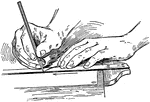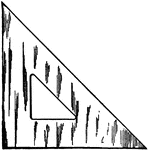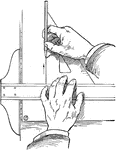Clipart tagged: ‘drawing tools’

Compass
In some instruments joints are held in position by lock nuts allowing ample movement of the legs, yet…

Drawing Lines at an Angle 15 and 75
It is possible to draw lines forming angles of 15 and 75 degrees by arranging two triangles.

Drawing Vertical Parallel Lines
Triangles are used in drawing lines at right angles to the T-square.

Drawing a Horizontal Line
All lines in a mechanical drawing are made with the aid of an instrument. Horizontal lines are drawn…

30-60 Degree Triangle
Triangles are made of various substances such as wood, rubber, celluloid, and steel.

45 Degree Triangle
Triangles are made of various substances such as wood, rubber, celluloid, and steel.



